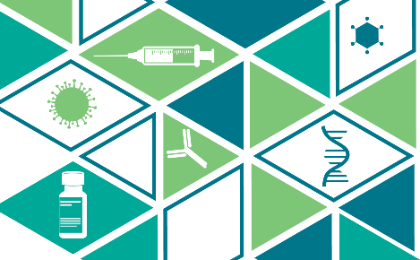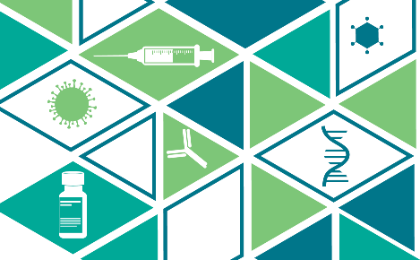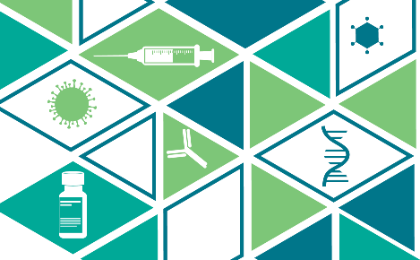Site editor:
Joaquim Cardoso MSc.
The Health Transformation — journal & content platform
October 1, 2022
Vaccine Insights 2022
27 SEPTEMBER 2022
Bhavna Lall, Dhruva Chaudhry, Shmuel Shoham, Onder Ergonul, Suneela Garg, Peter Hotez, Maria Elena Bottazzi, Yanis Ben Amor, Peter Figueroa, Sarah Gilbert, Mayda Gursel, Mazen Hassanain, Gagandeep Kang, David Kaslow, Jerome Kim, Heidi Larson, Timothy Sheahan, Annelies Wilder-Smith, Samba Sow, Prashant Yadav, Nathalie Strub-Wourgaft, Denise Naniche, Carolina Batista
Lancet Commission on COVID-19 Vaccines and Therapeutics Task Force *Lancet Commission on COVID-19 India Task Force
Summary:
- COVID-19 has led to more than 6 million deaths around the world [1]Ritchie H, Mathieu E, Rodés-Guirao L et al. Coronavirus (COVID-19) Deaths — Statistics and Research Our World in Data. 2021. (Accessed 26 Oct 2021)..
- Healthcare systems globally, with many already under crisis prior to the pandemic, have been impacted tremendously since the pandemic began.
- Leadership in each country and globally had to find ways to mitigate surges, while also having effective plans in place for timely responses with adequate access to interventions.
- As COVID-19 variants [2]Centers for Disease Control (CDC). COVID Data Tracker. CDC 2021.(Accessed 4 Oct 2021). surge with a persistent lack of sufficient vaccine coverage, the global healthcare community continues to require a comprehensive multidisciplinary approach to deal with the ongoing COVID-19 pandemic, where vaccination plays a vital role in mitigating the pandemic in addition to nonpharmaceutical interventions and therapeutics.
- Cooperation is urgently required between nations, community leaders, the scientific and healthcare community, global leaders, and industry …
- … to manage COVID-19 variant surges globally, as well as the spread of emerging pathogens, while focusing on prevention, testing, treatment, and healthcare and supply chain infrastructure and development.
Cooperation is urgently required between nations, community leaders, the scientific and healthcare community, global leaders, and industry …
… to manage COVID-19 variant surges globally, as well as the spread of emerging pathogens, while focusing on prevention, testing, treatment, and healthcare and supply chain infrastructure and development.

Introduction
The COVID-19 pandemic is far from over and variants continue to evolve and spread globally.
Scientists, healthcare professionals, public health officials, policymakers, and leaders face challenges making informed timely decisions and providing evidence-based guidance to guide their constituents and populations.
Since the beginning of the pandemic, nonpharmaceutical interventions (NPIs), also known as public health and social measures (PHSMs), such as hand washing, masks, physical distancing, and lockdowns played key roles in mitigation strategies [3].
We now have vaccines and therapeutics as additional powerful tools to control the pandemic.
COVID-19 vaccines have succeeded in decreasing disease severity, viral spread, and mortality.
However, inadequate (worldwide and regional) vaccine coverage due to lack of access, vaccine hesitancy [4], and other factors have contributed to COVID-19 surges in many parts of the world, compounded and exacerbated by the spread of new variants.
These surges in turn led to severe shortages and in some cases the collapse of healthcare services in areas with low vaccination rates, especially during the delta variant surge.
The experience in the southern United States in summer 2021 in states with low vaccination coverage demonstrates how the downstream effects of vaccine hesitancy can cripple local healthcare systems in even the wealthiest of countries [5].
And the experience in many low — and middle-income countries (LMICs) serves as a stark example of the catastrophic results of inadequate COVID-19 vaccine coverage, especially as new variants spread.
The experience in the southern United States in summer 2021 in states with low vaccination coverage demonstrates how the downstream effects of vaccine hesitancy can cripple local healthcare systems in even the wealthiest of countries [5].
And the experience in many low — and middle-income countries (LMICs) serves as a stark example of the catastrophic results of inadequate COVID-19 vaccine coverage, especially as new variants spread.

In April–May 2021, the delta variant-mediated COVID-19 wave surged in India, leading to mortality that was likely much higher than the officially reported 400,000 deaths [6].
Although the majority of vaccine doses contributed to COVAX were manufactured in India [7], vaccination coverage in this country of approximately 1.4 billion was under 5% at the time [8].
During the peak of infections, there were shortages and outages of oxygen, prompting a public outcry regarding need for critical oxygen supply for hospitalized patients as well as sick patients needing home oxygen due to inability in obtaining hospital beds.
There were also shortages of critical medications and hospital beds.
Clinical staff were stretched beyond safe limits.
Widespread use of ineffective therapies such as ivermectin, doxycycline, azithromycin, and mixtures of Ayurvedic medicines may have exacerbated the crisis.
Updated guidelines were provided at both the national and state levels but were frequently modified and often at variance with each other.
Social media became the driver for prescribing practices, which were often not evidence based.
Glucocorticoids were frequently misused.
In desperation, people purchased novel therapies such as remdesivir and tocilizumab on the open market and at exorbitant prices, but without assurances of origin and quality.
By the time the supply chains of oxygen and medications were streamlined and restored, significant damage had been done.

India then faced another crisis.
An unprecedented wave of COVID-19-associated mucormycosis cases (over 47,000 from May–July 2021) ensued [9], possibly due to overuse of steroids (including dexamethasone or equivalent) and the high diabetes/pre-diabetes prevalence in India, potentially causing an increased number of mucormycosis cases with a case fatality rate of approximately 36.5% [9].
The acute incidence of this epidemic of life-threatening fungal disease created critical shortages and price surges of key antifungals such as amphotericin B and Posaconazole [10].

The disruption of healthcare services due to COVID-19 affected all countries worldwide, with disproportionate impact on LMICs due to chronic suboptimal investments in health infrastructure and less resilience to recover.
New surges of COVID-19 and emerging pathogens could cripple countries in the future.
In times of medical crisis secondary to COVID-19, irrespective of variants, the healthcare and political leadership in each country and globally must find ways to mitigate surges while also having effective plans in place for timely responses with adequate access to interventions and healthcare.
In times of medical crisis secondary to COVID-19, irrespective of variants, the healthcare and political leadership in each country and globally must find ways to mitigate surges while also having effective plans in place for timely responses with adequate access to interventions and healthcare.
Countries need to have robust surveillance in place, or they will continue to be unpleasantly surprised at the spread of new variants.
Once COVID-19 cases begin to increase, it is critical to take early measures to control disease spread and transmission.
Delayed action results in increased cases and mortality as well as severe stress on healthcare systems for all patients and healthcare workers and staff.

With oral therapeutics now available in some countries, COVID-19 is being managed effectively in the outpatient setting even for high-risk populations for those who have access to these drugs.
Widespread availability and access to these drugs are urgently needed worldwide.
However, current oral therapeutics still require patients to present early after symptom onset (within five days of symptoms) and cannot be administered to all due to the potential of drug–drug interactions with some therapeutics.
In order to promote early access, best practices and availability of diagnostics, prevention, and therapeutics must be in place and immediately implemented.
A linear response to an exponentially increasing threat will result in failure and lead to crisis.
With oral therapeutics now available in some countries, COVID-19 is being managed effectively in the outpatient setting even for high-risk populations for those who have access to these drugs.
We propose the following three-pronged approach:
- 1.Prevention
- 2.Diagnosis & treatment
- 3.Healthcare infrastructure

1.Prevention
National pandemic preparedness plans should be developed and revised based on lessons learned from prior surges.
The World Health Organization (WHO) should continue to assist countries in identifying gaps, establishing best practices, and setting targets for implementation.

Countries should establish, with support as needed from international donors, a sentinel surveillance system that includes routine monitoring and sequencing for variants.
This needs to be coupled with tailored and effective community engagement.

COVID-19 vaccines must be universally available, accessible, affordable, and meet necessary safety, quality, and regulatory standards.
This will require sustained financial commitments and increased manufacturing of vaccine products.
But, without investment in capacity and infrastructure for countries to manufacture and deliver vaccines, and sustained efforts to gain public trust, vaccine doses will go to waste [11], [12].
The latter will require consistent messaging and active engagement of susceptible populations and communities.
Incentives should be designed to ensure ease of access to vaccines …
… including transportation to vaccination sites, compensation for time off work to allow for vaccination and days off if needed post-vaccination, and additional methods to mitigate the indirect and out-of-pocket cost of accessing the vaccines.
Vaccines must be affordable, easy to store, and accessible.
Policies should be feasible to implement and ensure equity and prioritization of vaccines based on scientific and medical data.
Health systems should be supported or augmented to be able to implement vaccine policies in a timely manner.

Misinformation should be addressed with strong community engagement and co-design of locally appropriate, fact-based messages.
Scientific literacy for all policy and country leaders is necessary to guide public messaging.
Vaccine hesitancy, willingness to be diagnosed, physical distancing, and mask-wearing are all areas where misinformation has resulted in setbacks in promoting accurate spread of information.

Research into improved vaccine thermostability and innovative methods for real-time extension of shelf-life information on vaccine batches should be encouraged …
… to reduce vaccine wastage and simplified delivery.
Vaccines should also be adjusted to new variants as needed.
Vaccination of vulnerable, marginalized, and high-risk populations, including health care and front-line workers, should be a priority.
In countries with large populations, policies such as allocation of vaccines to the private sector need to be mindful of both national and global guidelines to ensure equitable and efficient distribution to their populations.
Boosters should be considered as per national policy and especially in moderately to severely immunocompromised people and high-risk populations.
With only 22% of the population of low-income countries vaccinated with at least one COVID-19 vaccine dose, wealthier countries must assist in vaccine equity and coverage worldwide [1].
With only 22% of the population of low-income countries vaccinated with at least one COVID-19 vaccine dose, wealthier countries must assist in vaccine equity and coverage worldwide [1]
Without vaccine equity and coverage on a global scale, variants will continue to develop and spread, and our current vaccines are at risk of becoming ineffective.
Without vaccine equity and coverage on a global scale, variants will continue to develop and spread, and our current vaccines are at risk of becoming ineffective.

Investments should be made to boost sustainable manufacturing hubs in many low — and middle-income countries (LMICs)c for COVID-19 diagnostics, therapeutics and vaccines …
… via technology transfer and capacity strengthening in chemistry, manufacturing and control (CMC) capacity, and other critical infrastructure needed to produce and administer quality interventions [13].

Community participation and political leaders need to emphasize proper mask wearing and COVID-19 protective behavior during surges such as avoiding large gatherings, indoor masking, and physical distancing to achieve control of the pandemic surges.
In addition, contact tracing (when possible) and quarantine measures need to be enforced.
Universal availability of adequate PPE including N-95 face masks for health workers and at-risk front-line workers should be prioritized, as well as high risk populations/communities and all front-line workers.
Areas with known low vaccination rates should be targeted for preparatory measures to combat surges, as delineated in the next two sections.
Science and evidence should prevail and dominate the discourse, with attention to making key scientific findings and evidence accessible and understandable to lay audiences.
Strong community and leadership support is required to counter COVID-19 misinformation on social media, in open or public forums, and from influential leaders (politicians, religious leaders, local and community leaders), public protests, information handouts, and other areas where misinformation is also being propagated.

2.Diagnosis & treatment
a)Accessing validated rapid diagnostic tests (RDTs), and polymerase chain reaction (PCR) is the first condition for access to treatment.
Technical and resourcing support should be provided to ensure wide availability of antigen rapid diagnostic testing including community-based testing and self-testing to capture infections at the earliest stage of detectability so that the most suitable treatment options can be administered.
b)Clinical guidelines should be consistent, evidence-based, widely accessible, and flexible to address local needs of communities.
Guidelines should address all patients including hospitalized and outpatients as well as patient contacts.
c)Adequate stocks of essential lifesaving drugs during the pandemic which now include oral antivirals nirmatrelvir/ritonavir and IV antivirals …
… such as remdesivir as well as glucocorticoids such as dexamethasone, immunomodulators such as tocilizumab and baricitinib, currently effective monoclonal antibody cocktails, additional medications such as anticoagulants, antifungals, and antibiotics when needed, and critical oxygen supply must be maintained at levels sufficient to meet surge needs.
Antibiotic stewardship should also be maintained during a surge.
Key principles of how stocks and supplies can be transferred within a country between highly affected and non-affected regions/states should be investigated and negotiated before any surge.
Oral therapeutics, IV remdiesivir, and monoclonal antibodies are being used to prevent severe disease and hospitalizations.
Methods for rapid and affordable deployment of oral therapeutics and currently effective monoclonal antibodies, including in low-resource settings, should urgently be designed for those at primary need, i.e., at-risk populations.
Efficacious oral treatments for outpatients need an immediate scalable production plan.
d)The supply chain for oxygen (including production, transportation, storage, and distribution) must be prioritized, ensured, and supervised when oxygen supplies are noted to be in shortage.
The oxygen shortage that was witnessed in multiple countries during the early part of the pandemic must never be repeated.
Critically ill patients struggled to find oxygen for use in hospitals or at home during surges in multiple countries.
The allocation of available oxygen supplies need to be managed through planning and monitoring [14].
e)Medication and diagnostic prices in private markets where patients pay out of pocket must be controlled to ensure equitable and affordable access.
Home care and triage protocols must be strengthened to ensure timely identification and safe transfer of patients to higher level care when needed.
f)Research into oral treatments is still needed given the limitations of existing options.
In addition, treatments may need to be adapted due to variant selection (e.g., monoclonal antibodies), to treat immunosuppressed patients, to prevent resistance development, and, ideally, to prevent or treat post-COVID conditions.
Adequate funding to cover those critical research gaps is needed.

3.Healthcare infrastructure
Hospital beds, staffing, respiratory equipment, ventilators and supplies that will be needed should be prepared in advance of a COVID-19 surge.
Infection Prevention and Control (IPC) teams in health systems should be adequately resourced to manage IPC supplies [15].
Temporary hospitals for treating mild-to-moderate cases of COVID-19 are also needed when home quarantine is not possible [16].
Adequate staffing of healthcare personnel such as physicians and nurses should be ensured prior to surges.
During staff shortages, task shifting plans should be in place to train other healthcare workers, including medical and nursing students and resident trainees, in COVID-19 care.
Mental health needs for healthcare worker teams must also be addressed during this time.
Command and control communication systems should be prepared ahead of time to ensure coordination, facilitation, and safe transportation of sick patients from rural areas and homes to hospitals.
Healthcare systems must be strengthened, especially at the primary care level to ensure equitable access to diagnostics, therapies, and vaccines.
Healthcare and public health systems should be responsive and able to test, track and treat in a timely manner and have access to tools such as rapid antigen testing (AgRDT).
Capacity for advanced virology (e.g., genomic sequencing) should be considered a necessity and at least 5% of detected samples should be sequenced.
The system for pathogen genomic sequencing in LMICs is nascent and will require technical and financial support to achieve these targets.
There is an urgent need to vaccinate equitably to prevent the spread of this pandemic and to ensure therapeutics are readily available worldwide.
We need a comprehensive multidisciplinary approach to deal with the ongoing COVID-19 pandemic, where vaccination will play a vital role in mitigating the pandemic in addition to non-pharmaceutical interventions and therapeutics.
We must scale up vaccine and therapeutics production, encourage unhindered supply, and ensure that infrastructure for delivery is in place globally.
This will require coordination between governments, vaccine producers, pharmaceutical companies, and community leaders to save lives and ensure equity.
In turn, this will prevent the spread of more coronavirus variants and accelerate the decline of the pandemic.
In addition, vaccine developers have a moral duty to support vaccination campaigns in LMICs to establish and expand infrastructure and vaccine manufacturing capacities.
It is also essential for the current and future global pandemics that intellectual property rights for vaccines and therapeutics that are deemed essential worldwide do not prevent widespread deployment.
As part of global efforts for pandemic preparedness, global health leaders and multilateral organizations should leverage on intellectual flexibility frameworks to ensure equal access for vaccines and therapeutics that are deemed essential.
Simultaneously, as the world’s population is yet to be fully vaccinated, we must be prepared to manage cases of COVID-19 with adequate infrastructure, diagnostics and therapeutics.
Cooperation and solidarity are urgently required between nations, community leaders, the scientific and healthcare community, global leaders, and industry.
The time is now for such a collaboration to address the needs of the healthcare communities worldwide that are being impacted by the ongoing crisis and support the infrastructure that is so desperately needed.
The time is now for such a collaboration to address the needs of the healthcare communities worldwide that are being impacted by the ongoing crisis and support the infrastructure that is so desperately needed.
References:
See the original publication
Originally published at https://www.insights.bio on September 1, 2022.
About the authors & affiliations:
Bhavna Lall, Dhruva Chaudhry, Shmuel Shoham, Onder Ergonul, Suneela Garg, Peter Hotez, Maria Elena Bottazzi, Yanis Ben Amor, Peter Figueroa, Sarah Gilbert, Mayda Gursel, Mazen Hassanain, Gagandeep Kang, David Kaslow, Jerome Kim, Heidi Larson, Timothy Sheahan, Annelies Wilder-Smith, Samba Sow, Prashant Yadav, Nathalie Strub-Wourgaft, Denise Naniche, Carolina Batista
Lancet Commission on COVID-19 Vaccines and Therapeutics Task Force *Lancet Commission on COVID-19 India Task Force
Affiliations
Bhavna Lall
Tilman J. Fertitta Family College of Medicine,
University of Houston
Houston, TX, USA
Dhruva Chaudhry
Post Graduate Institute of Medical Sciences,
Pandit Bhagwat Dayal Sharma University of Health Sciences,
Rohtak, Haryana, India
Shmuel Shoham
Johns Hopkins University School of Medicine,
Baltimore, MD, USA
Onder Ergonul
Research Center for Infectious Diseases,
Koc University,
Istanbul, Turkey
Suneela Garg
Maulana Azad Medical College and Associated Hospitals,
New Delhi, Delhi, India
Peter Hotez
Texas Children’s Center for Vaccine Development,
Baylor College of Medicine,
Houston, TX, USA
Maria Elena Bottazzi
Texas Children’s Center for Vaccine Development,
Baylor College of Medicine,
Houston, TX, USA
Yanis Ben Amor
Center for Sustainable Development,
Columbia University,
New York, NY, USA
J Peter Figueroa
University of the West Indies,
Mona, Kingston, Jamaica
Sarah Gilbert
Pandemic Sciences Institute, Nuffield Department of Medicine,
Oxford University,
Oxford, UK
Mayda Gursel
Middle East Technical University,
Ankara, Turkey
Mazen Hassanain
College of Medicine, King Saud University,
Riyadh, Saudi Arabia
Gagandeep Kang
Christian Medical College,
Vellore, India
David Kaslow
Program for Appropriate Technology in Health (PATH) Essential Medicines,
PATH Seattle,
WA, USA
Jerome H Kim
International Vaccine Institute,
Seoul, South Korea
Heidi J Larson
London School of Hygiene & Tropical Medicine,
London, UK
Denise Naniche
ISGlobal-Barcelona Institute for Global Health-Hospital Clinic,
University of Barcelona,
Spain
Timothy Sheahan
Gillings School of Global Public Health,
University of North Carolina,
Chapel Hill, NC, USA
Annelies Wilder-Smith
London School of Hygiene & Tropical Medicine,
London, UK
and
Heidelberg Institute of Global Health,
University of Heidelberg,
Heidelberg, Germany
Samba O Sow
Center for Vaccine Development,
Bamako, Mali
and
University of Maryland,
MD, USA
Prashant Yadav
Center for Global Development,
Washington, DC, USA
and
Harvard Medical School,
Boston, MA, USA
and
Technology and Operations Management,
INSEAD
Nathalie Strub-Wourgaft
ISGlobal-Barcelona Institute for Global Health-Hospital Clinic,
University of Barcelona,
Spain
and
Drugs for Neglected Diseases Initiative,
Geneva, Switzerland
Carolina Batista
Médecins Sans Frontières,
Rio de Janeiro
Brazil
and
Baraka Impact Finance
Geneva, Switzerland












